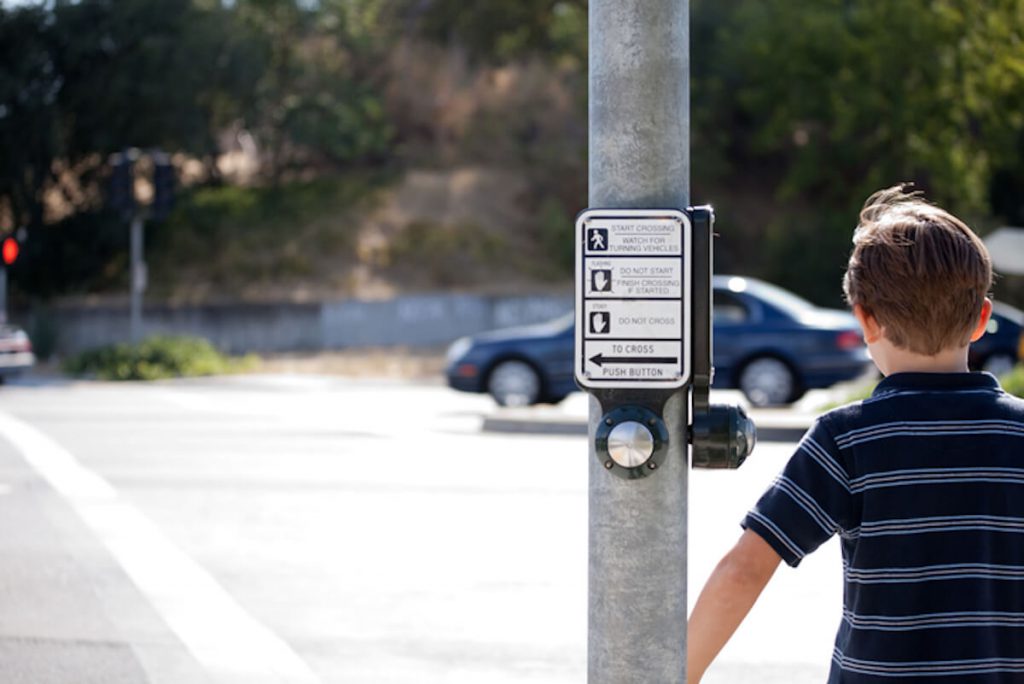Grade Level: Grades 4 – 6
Subject: Traffic and Road Safety
Time Required: 50-60 Minutes
Overall Expectations:
- HPE – Healthy Living Strand
- LL – Language and Literacy
- A – Arts
- ML – Media Literacy
Introduction/Minds On:
(10 minutes)
- Hand out a card listing an action (wearing a seatbelt, wearing a bike helmet, being a safe car passenger, look all ways before you cross the street, use proper hand signals while cycling/riding a snow mobile, cycling, all-terrain vehicle (ATV) riding, in-line skating, skateboarding, walking/jogging, or snowmobiling) to each student.
- Have students walk around the class for two minutes miming the action they have been given.
- Ask students to name the actions of their classmates.
Development/Action:
(30 minutes)
- Have students work in six small groups to brainstorm rules and suggestions to stay safe while cycling, riding an all-terrain vehicle (ATV), in-line skating, skateboarding, walking/jogging and snowmobiling.
- Have students write or draw their ideas on a poster (as a group).
- Display the posters in the class for a Gallery Walk.
- Using Appendix 1 (Jot Notes Gallery Walk) have students write observations about the posters as they walk around the classroom.
- Once all students have had the opportunity to examine the posters, have each student present their poster to the class. This will allow students to make changes and to elaborate on their poster summary, using Appendix 1 (Jot Notes Gallery Walk).
- Have students refer to Appendix 2 (Vehicular Activities Rules and Risks) and Appendix 3 (How to Wear a Bike Helmet and Cycling Hand Signals) to identify and add any missing rules and risks associated with different vehicular activities.
Consolidation/Debrief:
(10 minutes)
Have students examine the Vehicle Safety Illustrations in Appendix 4, then identify risks associated with the six activities discussed throughout the lesson. Write point-form notes of their observations. As a class, review the rules, risks and repercussions associated with the students’ observations (for example, personal safety risks such as brain injury or breaking the law by not wearing a seat belt).
Extension
Have students select one medium to convey a persuasive message about the importance of road safety and their activity (for example, brochure, PowerPoint, jingle or poster).
Materials List
Appendix 1: Jot Notes Gallery Walk
Appendix 2: Vehicular Activities Rules and Risks
Appendix 3: How to Wear a Bike Helmet and Cycling Hand Signals
Appendix 4: Vehicle Safety Illustration
Appendix 5: Conferencing Checklist
Index cards or small pieces of paper
Six large poster sizes pieces of paper
More information: Car Safety topic page
More information: Bicycle Safety topic page
More information: Off-Road Vehicles topic page
More information: Owning and Operating a Snowmobile topic page
Learning Outcomes
Oral: Use speaking skills and strategies appropriately to communicate with different audiences for a variety of purposes.
Writing: generate, gather, and organize ideas and information to write for an intended purpose and audience.
Media: Create a variety of media texts for different purposes and audiences, using appropriate forms, conventions and techniques.
Art: Produce two- and three-dimensional works of art that communicate a range of ideas (thoughts, feelings, experiences) for specific purposes and to specific audiences.
